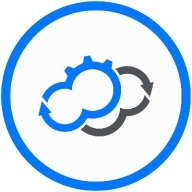

Cloudify and Sangfor HCI are competing products within the HCI space, each offering distinct benefits. While Cloudify's flexible deployment and pricing make it attractive, Sangfor HCI is preferred for its comprehensive feature set, particularly in security and efficiency.
Features: Cloudify provides an open-source framework that supports orchestration across cloud and on-premise environments, boasts extensibility through custom plugins, and offers seamless integration with multiple platforms like AWS, Azure, and VMware. Sangfor HCI includes robust data protection, disaster recovery capabilities, and comprehensive security features within its hyper-converged solution.
Room for Improvement: Cloudify could enhance its proprietary technical support and improve feature integrations for non-technical users. The documentation, though extensive, might be simplified for easier understanding by entry-level engineers. For Sangfor HCI, reducing the upfront cost and offering more extensive community resources could broaden its appeal. Additional customization options for businesses with unique needs would be beneficial.
Ease of Deployment and Customer Service: Cloudify ensures straightforward deployment with extensive documentation and community contributions, promoting rapid implementation. Sangfor HCI provides a streamlined installation process with dedicated technical support, ensuring smooth deployment in complex environments. Sangfor's customer service is often highlighted as superior because of its dedicated support team compared to Cloudify's reliance on community support.
Pricing and ROI: Cloudify offers a cost-effective initial setup, enabling organizations to scale their investment according to evolving needs, ensuring favorable ROI over time. Conversely, Sangfor HCI's significant upfront cost includes an all-in-one package designed to deliver immediate efficiencies and long-term savings through reduced operational expenses. The integrated services offered by Sangfor provide value, whereas Cloudify's value lies in its scalable approach and lower entry cost.
| Product | Market Share (%) |
|---|---|
| Sangfor HCI - Hyper Converged Infrastructure | 2.0% |
| Cloudify | 1.8% |
| Other | 96.2% |


| Company Size | Count |
|---|---|
| Small Business | 3 |
| Large Enterprise | 6 |
| Company Size | Count |
|---|---|
| Small Business | 23 |
| Midsize Enterprise | 6 |
| Large Enterprise | 3 |
Cloudify is an open-source orchestration-first cloud management platform. The solution allows applications to efficiently run across multiple cloud or data center platforms for premium multi-cloud infrastructure automation and orchestration. It provides infrastructure automation using environment as a service (EaaS) technology to deploy and continuously manage any cloud, private data center, or Kubernetes service from one central point while leveraging existing toolchains.
Cloudify Product Highlights
Cloudify Features
Cloudify has many valuable key features. Some of the most useful ones include:
Cloudify Benefits
There are many benefits to implementing Cloudify. Some of the biggest advantages the solution offers include:
Sangfor HCI is an IT infrastructure platform built on converged architecture. It integrates server virtualization, distributed storage, and networking. Sangfor HCI provides a unified management platform that converges compute, storage, networking, and security on a single software stack. This approach delivers a simplified architecture, ease of use, and reliability for business-critical applications.
Hyperconverged infrastructure is a unified system of data storage. HCI combines storage, computing, networking, and management, unlike traditional storage solutions. HCI systems enable you to build your private cloud, expand to a public cloud, or have your own true hybrid cloud. Sangfor HCI presents two product models: The Sangfor HCI server appliance is a hardware version that enables easy deployment. Sangfor HCI software is the digital version combined with a third-party server that enables flexible deployment.
Sangfor HCI supports Windows systems on desktop and is web-based. Its range of use cases cover a wide spectrum of industries, from healthcare to manufacturing. It is applicable for mid- and large-sized businesses. The software is customizable. Users can customize the logo and contact information in the user interface.
Benefits and Features
Use Cases
Sangfor HCI can be applied tin various scenarios:
Reviews from Real Users
Gabriele P., Senior Software and Systems Engineer at SAMU.IT, says "It is flexible like a hyper-convergence system. You can add nodes, and you can scale to have better performance and stability. I also like the backup feature, the recovery system, and the web interface GUI to handle everything."
A Junior Solutions Engineer at a tech services company adds that "Sangfor has many solutions, and you can easily manage their machine servers with just one management. They're always striving for greatness, and they continuously update their products. For example, they have now built endpoint security within the firewall. They are continuously improving not only the security but also all other products."
We monitor all Cloud Management reviews to prevent fraudulent reviews and keep review quality high. We do not post reviews by company employees or direct competitors. We validate each review for authenticity via cross-reference with LinkedIn, and personal follow-up with the reviewer when necessary.